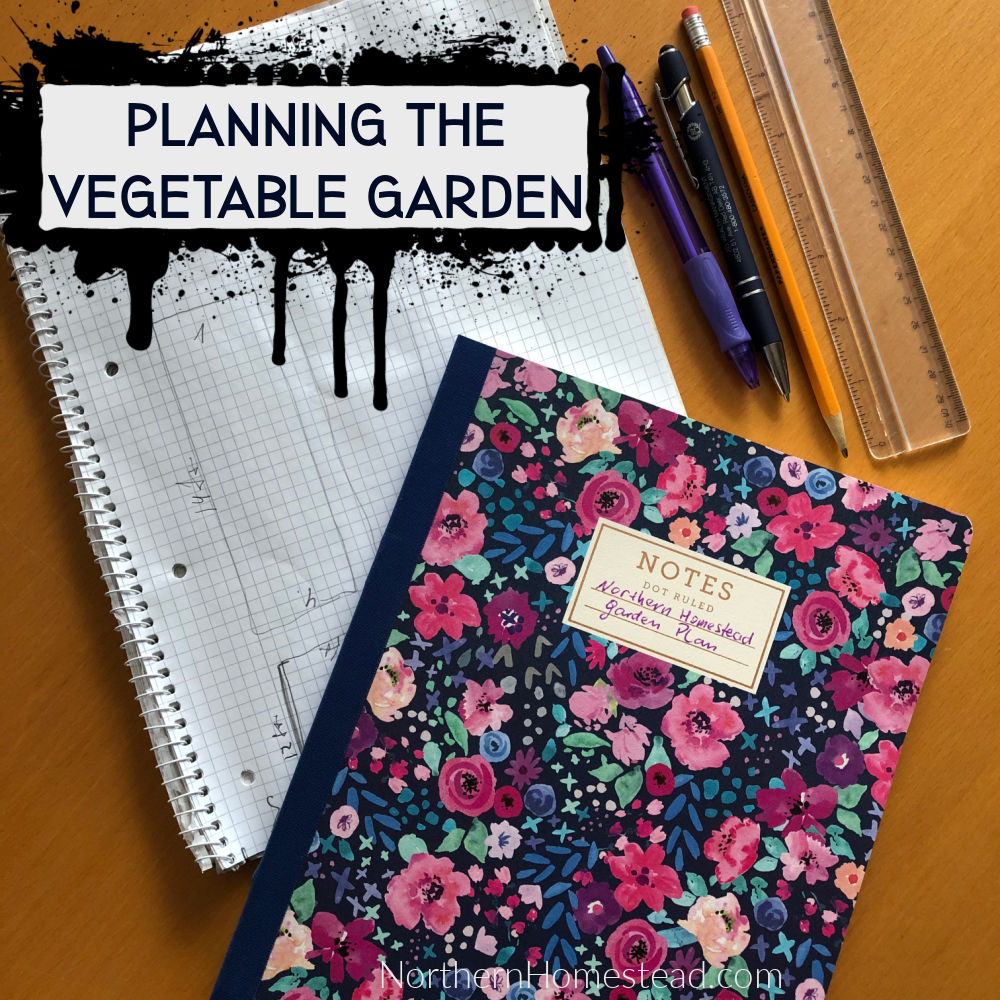
Planning a vegetable garden is for those who love making plans and lists; it is a welcomed exercise but a struggle for non-natural planners. We are more in the latter category. You know how it goes: you make a plan, at least sort of, then change it, and then lose it. Oh, the struggle! If you know what I’m talking about, keep reading to find a simpler solution.
The benefit of a garden plan
With a garden plan, you can think ahead of time about what and how much you want to plant. This is very important if you want to grow what you eat, and not waste seeds and time on things you don’t need.
It really matters where you plant what. Using microclimates, you can find the best location for the different plants.
You can also take the time to look up companion planting for optimal results. And if you are consistent year after year, you can also optimize crop rotation. However, both of these are a bit overrated.
A good garden plan also helps keep track of what did well, where, and how much your family needs.
Using a garden planner
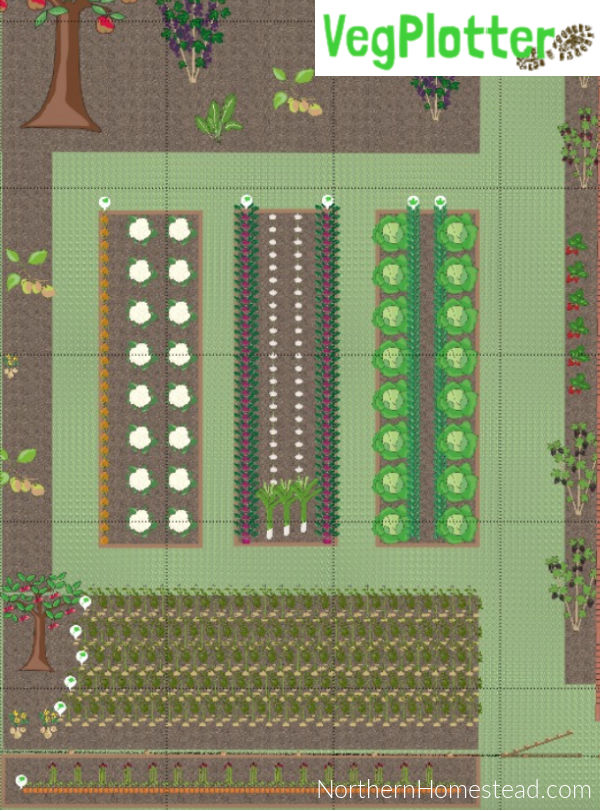
There are great garden planners out there, both online and on paper. If you want to try your hand at an online version, try VegPlotter, a free planner. It’s great for people who prefer to use a computer or even a smartphone to plan the garden. Garden planner books are written by and for great planners.
Each author, online or in a book, offers a plan that he or she finds helpful. It often reflects the growing conditions the author has and includes a ton of information that may or may not be relevant to your situation. If you catch the idea, it can be helpful to use a planner. If you don’t, the planner becomes another thing to tackle.
Start your own planner
If you have followed us for a while, you’d know we like simple things. This is true for meal planning for gardeners as well as garden planning.
Here, we offer a simple way to make your own garden planner that you can use as much or as little as you find helpful.
Any piece of paper can be used to sketch out your garden area or garden beds and start “planting”. However, that’s where the trouble starts. That piece of paper gets misplaced and lost quite quickly.
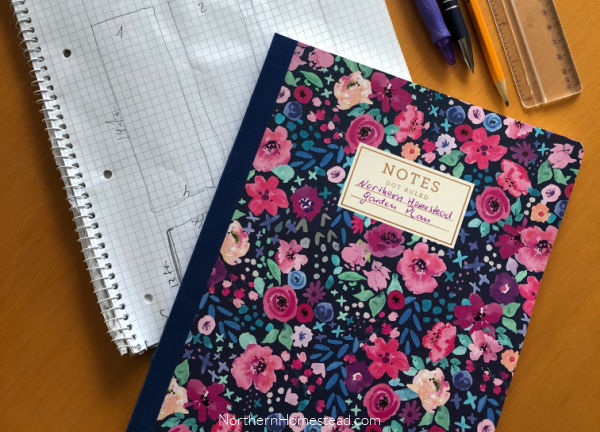
Instead, get yourself a notebook, not too fancy, so you are afraid to mess up, but nice and durable enough so that it can be used for many years. It’s your garden notebook. A4 or letter (8¼ × 11¾ inches) is a good size, so there is room to plan. Gridlines or dots are helpful in sketching the garden beds. A spiral-bound is a good option so it can stay open easily.
Measuring the growing area
To plan the annual vegetable garden, you need to know the garden area where the vegetables will be planted. This step is needed no matter if you want to use an online planner, a garden book, or make your own garden planner notebook.
Make a simple map of your garden layout on a piece of paper. Now, take a measuring tape and get the length and width of each bed. For the annual garden, we do not need a fancy plan for the whole garden, just the annual vegetable beds.
If you have a simple garden patch, this will be easy. If you have different beds in different areas like us, it might get a bit more complicated. However, from my own experience, I can say that skipping this step only makes things more difficult. So I encourage you to take the time and make a good map.
Sun exposure is another thing that you want to mark on the plan. Generally, it’s easy to have north on top of the page, so all beds are according to how they are in real approximation to the sun. If a bed runs north to south, sketch it top to bottom; if a bed runs east to west, it will be across the page. This will be important when planning where to plant because you usually want tall plants in the north so that they do not shade the smaller plants.
Start planning your vegetable garden
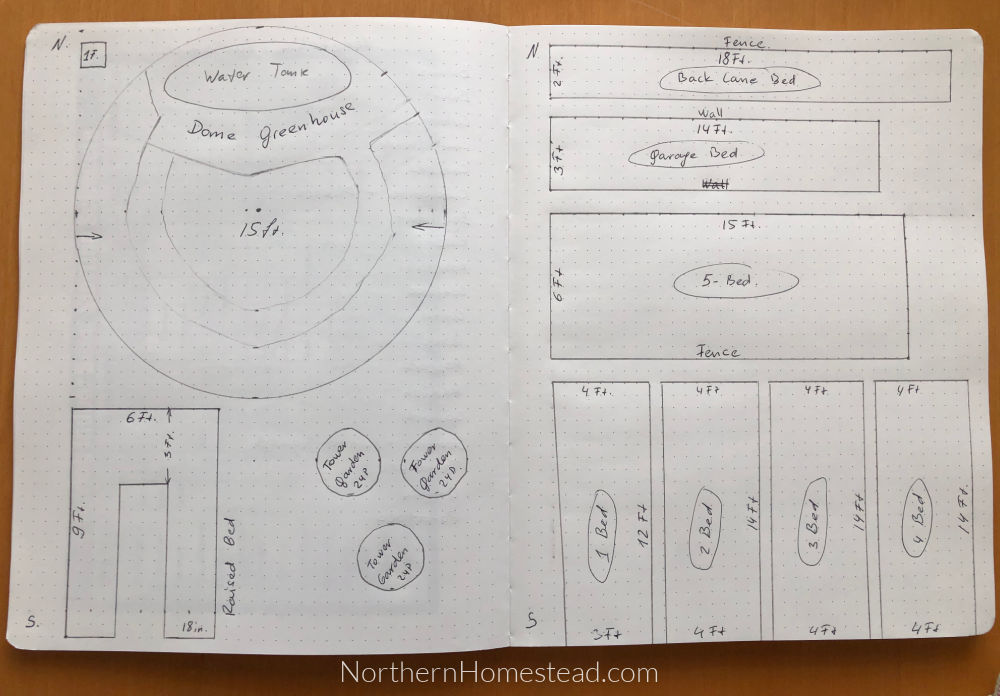
Firstly, transfer your garden map into the notebook. Make sure to add the measurements and the scale you use. I used four grid dots for 1 square foot in the example picture. You can use whatever scale you want; I would not recommend going smaller than that, though you want to have room to write. That first plan in the notebook is the primary map for future plans.
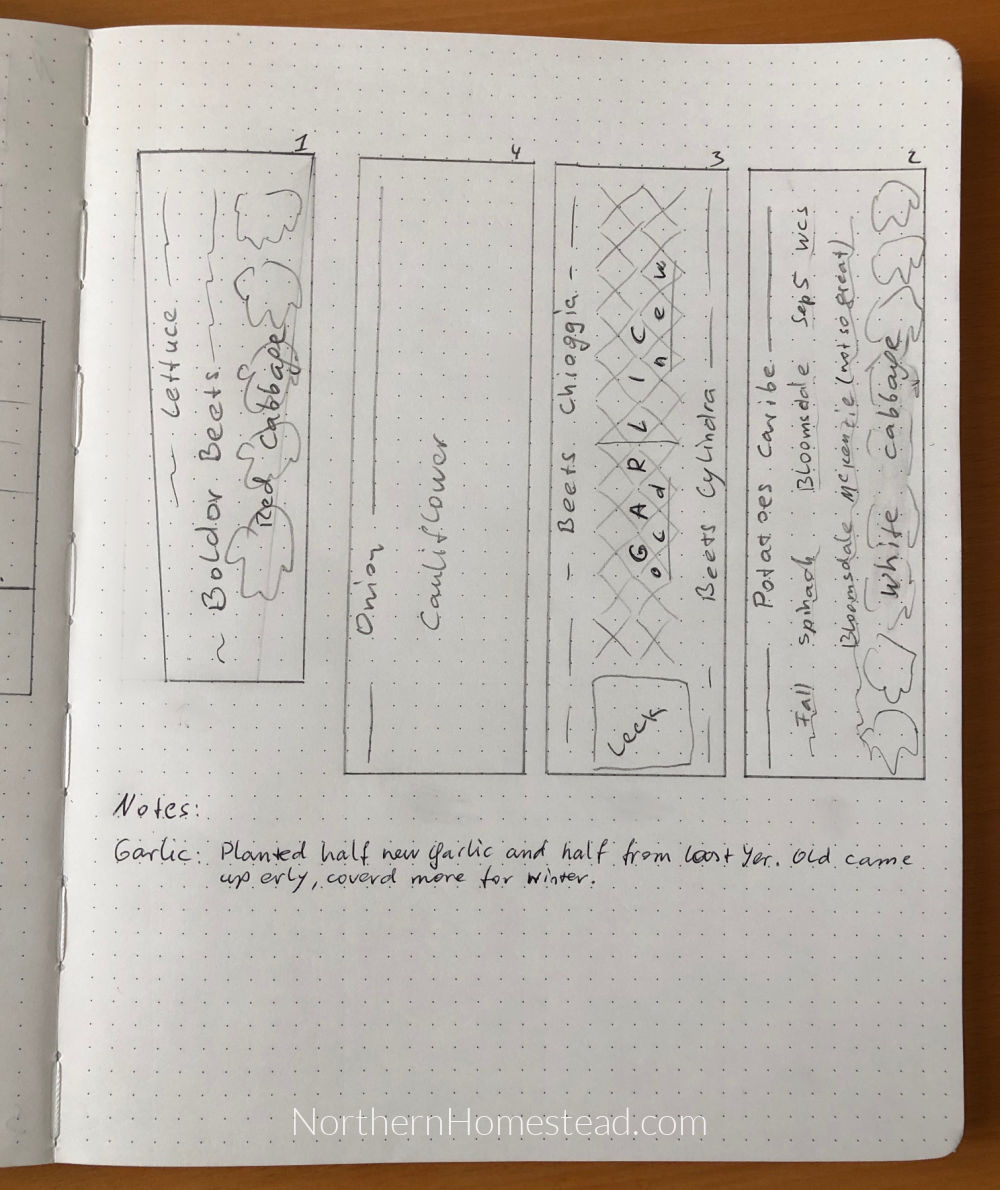
Secondly, copy that map to the next page or pages, depending on your garden size. This time, you do not need to add measurements. Write down the year the plan is for and start planning.
It’s your plan; make it as specific as you want or find it helpful. You can start with the list of all the varieties you want to grow on one side, and a plan on the other. Or you can add a number of plants you plan to grow. You can add the name of specific varieties, or keep it more general. There is no right or wrong; whatever helps you grow a better garden.
Leave some room for notes; it’s more likely that you will write down what seems important if there is room for it. We often do not remember as much as we thought we would. But again, it’s up to you. Do not feel obligated to do something you don’t enjoy, because this shouldn’t become another chore.
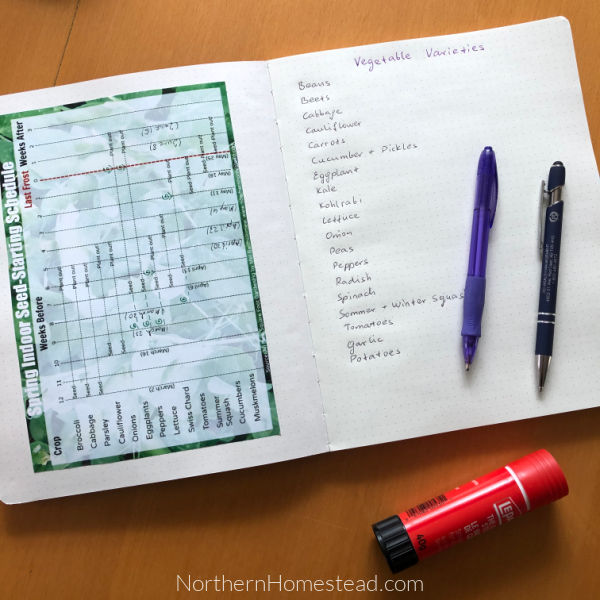
Next year, you will already have a map of your garden. Copy the map to the next empty page and start a new plan for the new garden year. Look back and see what grew where last year, and maybe you also added some notes (or still remember) at the end of the season if something did not do so well.
Seed starting schedule and planting times
I also glued the schedule for seed starting indoors into the notebook. It is nice to have everything in one place. It’s a free printable in that linked article that also helps you find your free frost days; just follow the link.
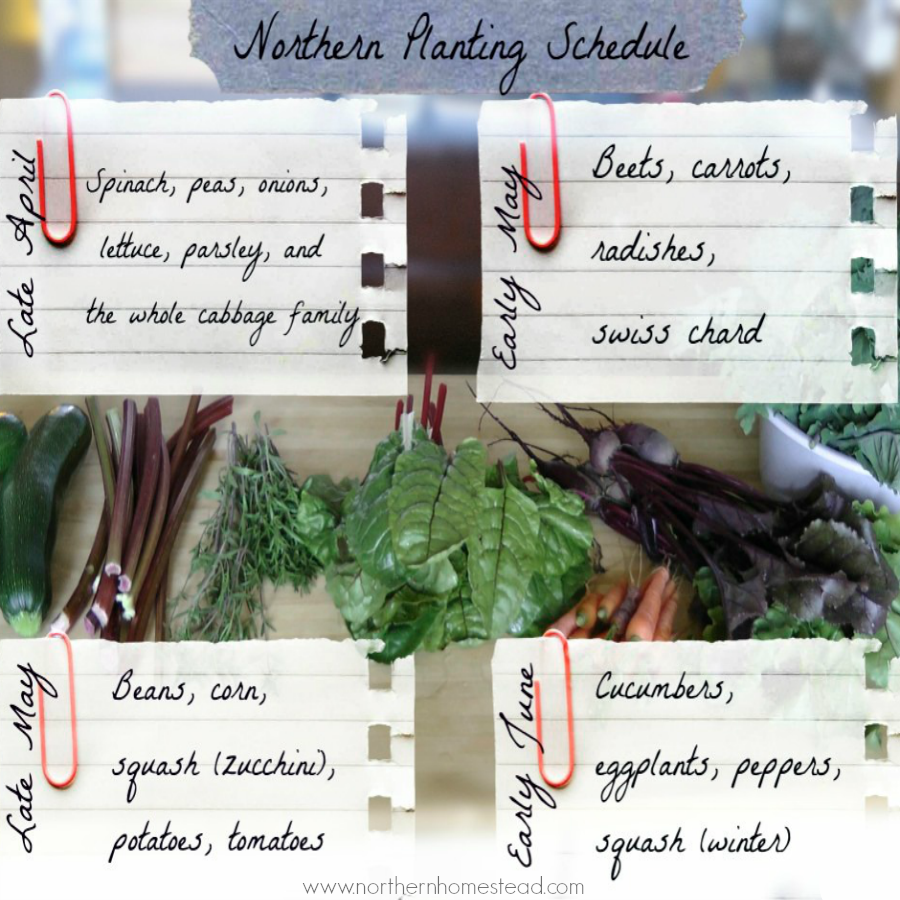
You are also welcome to add a planting schedule for your climate and the vegetables you want to grow. If you do succession planting, you may want to add that as well.
Companion planting and crop rotation
As I mentioned before, companion planting and crop rotation are a bit overrated if you grow a mixed garden, not a monoculture.
Adding a good layer of compost every year, you can grow the same crop in the same location for several years. Interplanting legumes (nitrogen fixers) with other vegetables helps to improve the soil as well.
Crop rotation is important if you have a problem. For example, If potatoes had potato scab or blight, grow them in a different location. If they are healthy, you can grow them in the same spot. Carrot maggots may stay in the ground; rotating the carrots is a good idea, too.
Companion planting is another topic that garden books and blogs love to write about. If you do the research, you will find that those lists do not match. What one says should be avoided, another expert says can be grown together. This is simply because all of it is based on experience, and so many factors can play a role in why one plant might not grow so well. But it does not hurt to take a look at companion planting while planning to get better results.
Generally speaking, I find that being careful with herbs, onions, and other aromatic plants is a good idea. We grow most herbs in the herb garden and let them reseed themself so that they are not in the way, so to speak, in the vegetable garden.
Using the space effectively
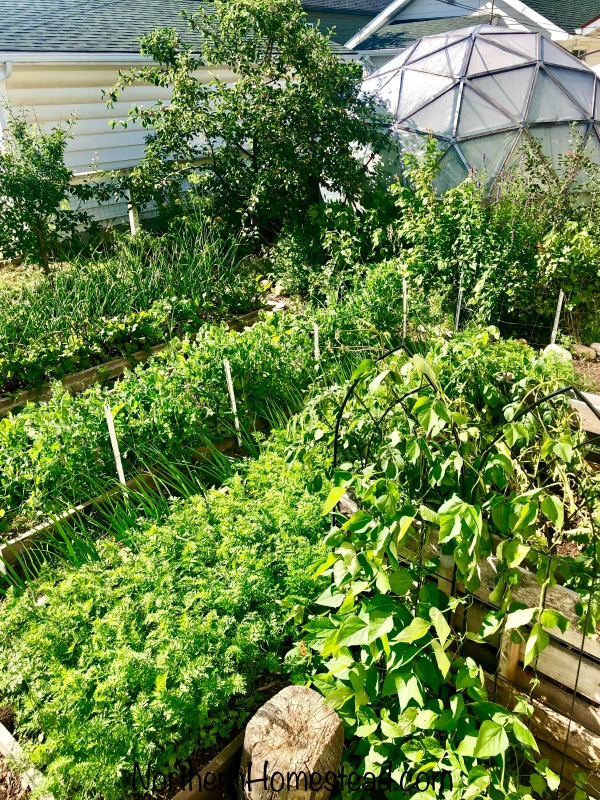
One of the benefits of a garden plan is to optimize the growing space. Without a plan, it is easy to get out in spring and just seed every seed package you have. Once all of it is up and growing, you wonder what you are going to do with a whole row of lettuce and another one of zucchini. There is a better way to plant a garden.
Find out what you want to eat and plan the garden accordingly. A year has only 52 weeks. So even if you want to have broccoli each week, that’s 52 plants. A seed package often has 100 seeds. If you want an onion for each day of the year, that’s 365. You get the idea. 🙂
You can plant a lot in a very small space using the square-foot garden method. In our cold climate, I find that making the squares a bit more generous is better than following the method to the letter. Cold and shade do not go well together.
While planning, take into account your growing area. You might want to do a shade survey beforehand. If there is a shady spot, plant a cold-weather crop; if there is a hot microclimate, plant a heat-loving plant.
Planning the vegetable garden will help you to use the space effectively. If you have. greenhouse, check also out planning a greenhouse garden.
We invite you to subscribe to Northern Homestead and follow us on Instagram, Facebook, or Pinterest for the latest updates.

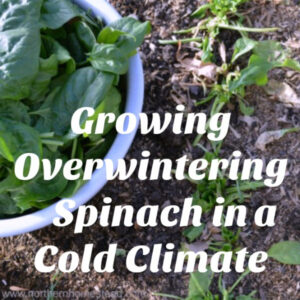
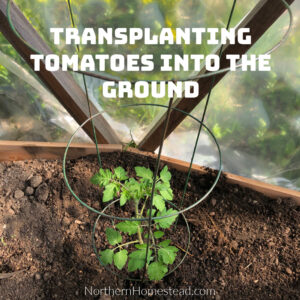
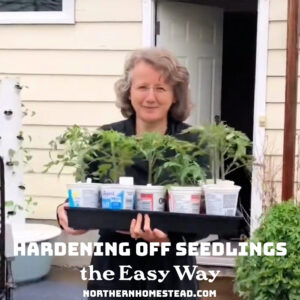
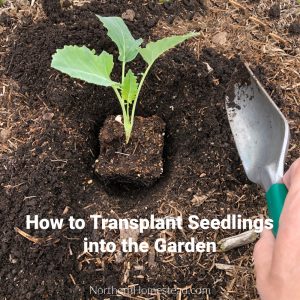
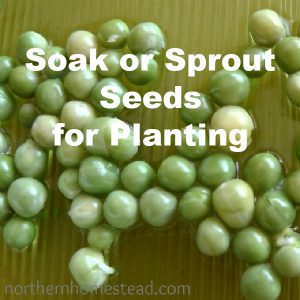
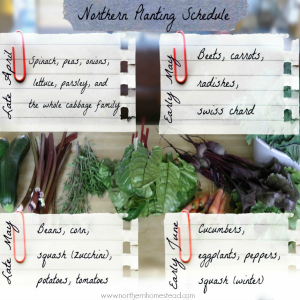
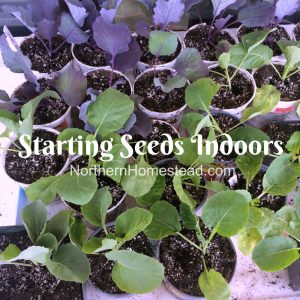
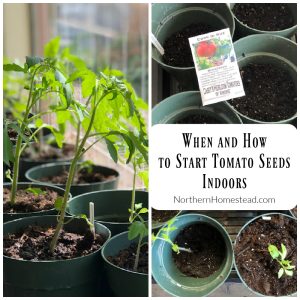
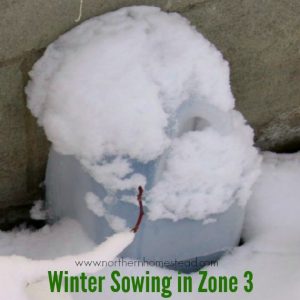
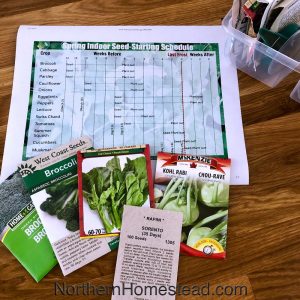

Leave a Reply